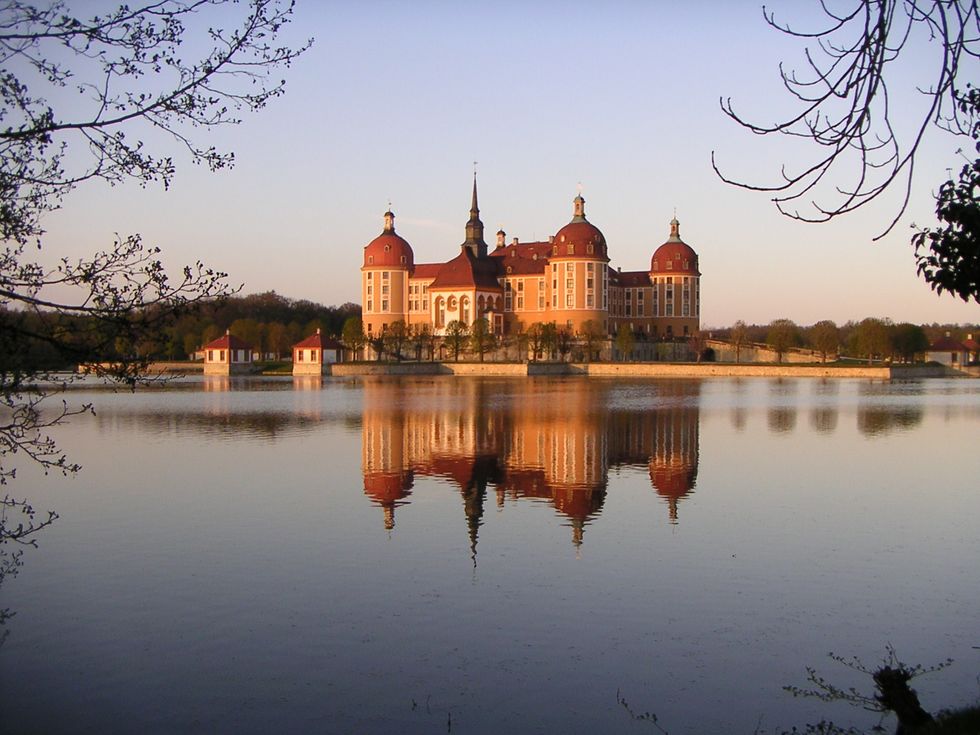During my study abroad trip in Prague, we had two weekends out of the five weeks there to spend some time away from our studies. This gave us the chance to explore Prague and the rest of Europe. I decided to take a train to Dresden, Germany. Whenever I think of Dresden, I think of the name of the city in italics as Kurt Vonnegut would describe Billy Pilgrim teleporting to the barn house in "Slaughterhouse-Five," and I imagined it as a city without much to see since the Allied bombing in 1945. Having never been to Germany, I didn't go with many expectations. I expected to learn a lot about the history of the city, but after I got off of my five hour train ride, which I spent looking at the hills and plains leading to the city, I just decided to explore. I got lost, without regret, because I saw the exterior of the Katholische Hofkirche and Dresden Castle. Before 1945, Dresden was called "The Florence of the Elbe" because of its beautiful architecture and museums. I woke up, the morning after arriving, to walk around the city, and I think the city still deserves that name. Having never before seen the Elbe and seeing it in Dresden was an experience I'll never forget. The city was beautiful, with its Gothic and Baroque-style cathedrals, the castle, and restored museums, and the Elbe shimmered under it all.
I took a train across the Elbe with plans to go to see the Moritzburg Castle. I didn't know what to expect for that either. I found some pictures online and read some good reviews about the museum inside. If you are traveling, make sure to check train and bus routes before you rely solely on Google Maps, because getting lost in a city where very few people speak English can be troublesome. I was sitting at a bus stop waiting and I asked a man when the next bus was coming. He opened an app for Dresden public transit on his phone and showed me that it would show up in seventeen minutes, so I waited for almost half an hour and then called it quits. I walked down the street to find a cab, and eventually found one that would take me to Moritzburg. As soon as I got in the cab, the bus drove by, and I spent $25 on a cab. In the end, it was worth it. When I walked up to the outside of the castle, the first thing I noticed was the shimmering moat around it.
The exterior was just as beautiful as the interior, which I wasn't allowed to take pictures of. From this trip I learned about the castle and its history under the Saxon House of Wettin. This was the third castle I had been to after seeing Edinburgh Castle and Prague Castle.
While Edinburgh Castle was a fortress unlike the Prague Castle, being the residence of the Czech president and other historical Czech figures; Moritzburg Castle was much different. Seeing the treasures and eloquent rooms with countless buck heads and walls made from gold-gilded leather, this definitely struck me as a house of royalty. After all, it was primarily a hunting lodge for Saxon electors and kings. I wouldn't really say I was in awe at the interior, but it was interesting to see what the House of Wettin lived like. They were one of the first to use pewter pots, pans, and dishes to cook more efficiently rather than using copper, which often caused food poisoning. I learned a lot about the how the house operated, with the staff of the Dresden Court Kitchen being the most important line of staff under the House of Wettin until the creation of the Supreme Court Marshal in the 18th century. Even the Head Cellar Master was one of the highest office positions under the Supreme Court Marshal, whose primary job was tasting the drink of the sovereign to ensure it wasn't poisoned. I also learned about the Deposition of German princes following the German Revolution of 1918, and it amazed me that monarchy governed the German people for so long.
Overall, I'd have to say Dresden and Moritzburg are definitely two of my favorite destinations I've been to, for sightseeing, food, and history!





















